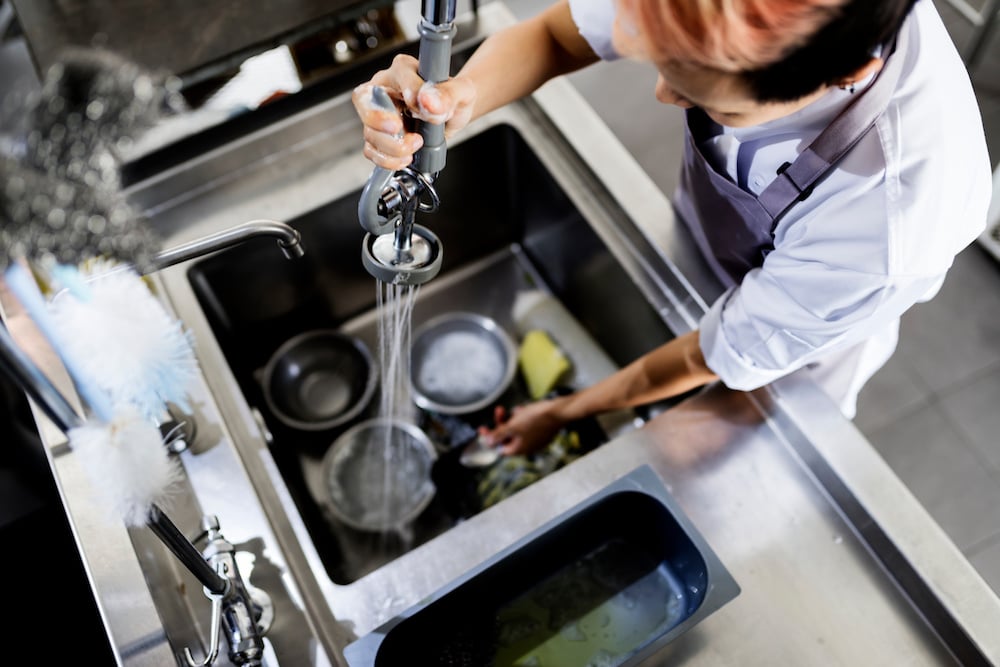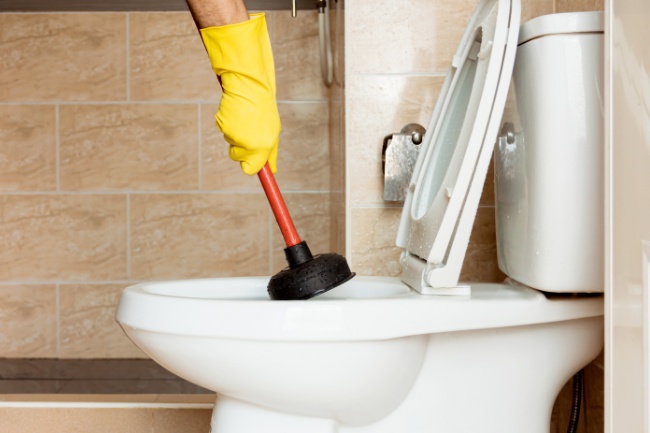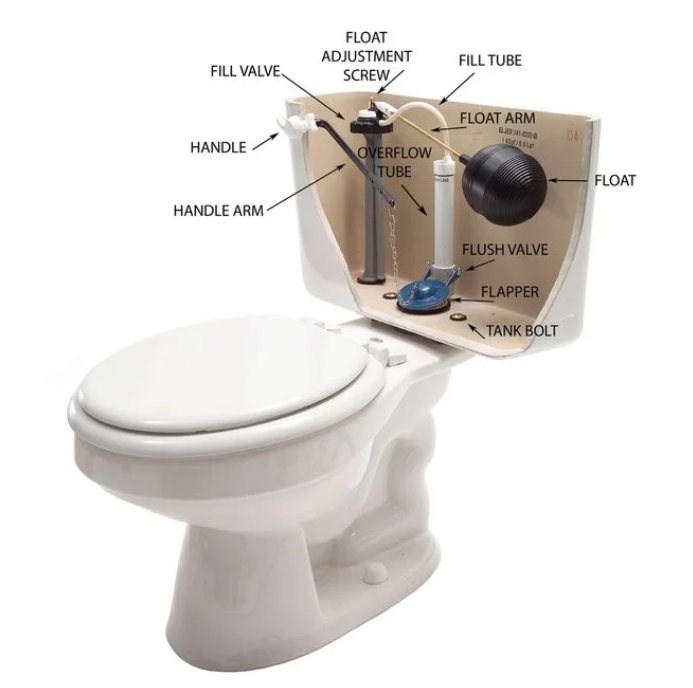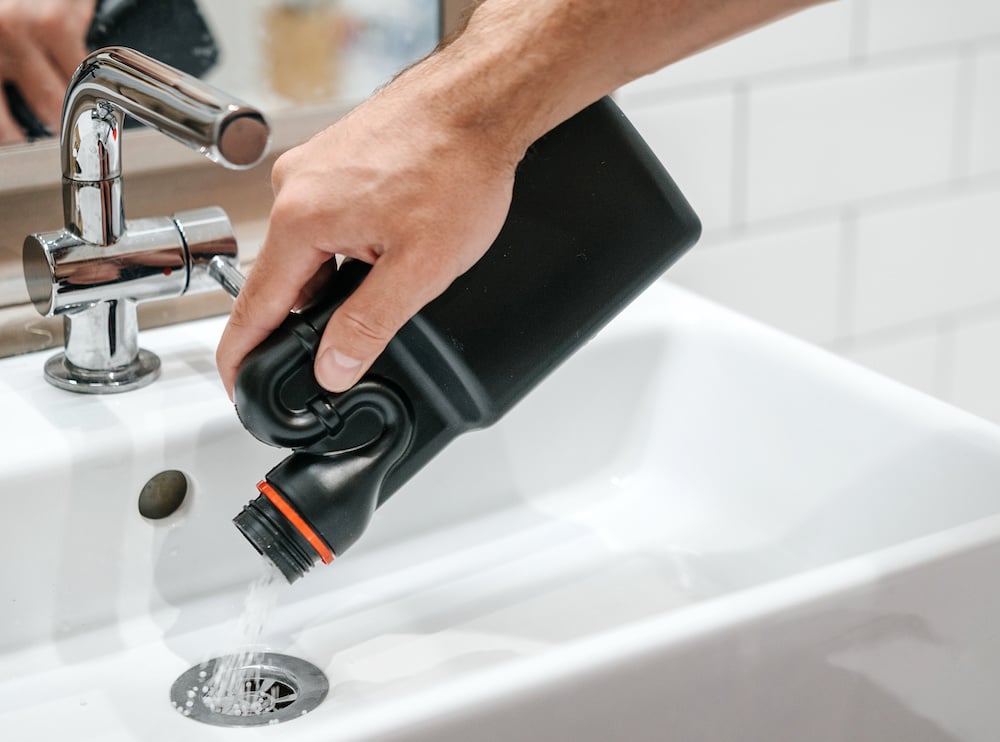7 Ways to Prevent Restaurant Plumbing Problems
Posted by Express Sewer & Drain Team on

Restaurants are a magnet for plumbing problems, and it’s no surprise considering the amount of plumbing equipment required to operate. In worst-case scenarios, restaurant plumbing problems can force the business to close temporarily if floodwaters or backed-up sewage gets into food storage areas, prep areas, or service stations. Not only could this get patrons sick by exposing their food to bacteria, but it can also lead to electrocution and slips and falls. We’re here to help prevent all that!
How to Prevent Plumbing Disasters in a Restaurant
No restaurant owner or manager wants to deal with a plumbing emergency, especially on a busy Saturday night! So, here are seven things you can do to avoid a “kitchen nightmare” or a “bar rescue.”
1. Address All Plumbing Risks Before Trouble Strikes
When was the last time you had a commercial plumbing risk assessment? If you can’t remember, the best method of prevention is to have one performed. The assessment should look at all plumbing that could lead to disaster, including:
- Grease management (faulty and/or neglected grease traps)
- Old, corroded pipes or improperly sized pipes
- Aging water heater
- Proper backflow inhibitor
- Backed up toilets and sinks
While some of these checks you can do on your own, it’s best to have a professional restaurant plumbing contractor perform the inspection to be sure everything is in working order. They can also explain good “kitchen hygiene” to make keeping up with plumbing equipment easier.
2. Keep an Eye on Clogs
A clogged drain is often the culprit when it comes to restaurant plumbing problems. Not only are clogs a nuisance for your dishwashing crew, but they can cause bacteria-filled wastewater to leak over your floors, resulting in the need for deep cleaning and potentially replacing carpeting, furniture, and other fixtures. Avoid this scenario by keeping an eye on:
- Food debris being jammed into the sink
- Grease buildup in the drain
- Foreign objects flushed down the toilet
- Backed up sewer drains
Dry goods can also easily be contaminated by water leakage, and moisture from leaks can create mold and nesting grounds for insects that any health inspector will spot. Avoid these scenarios by doing your due diligence through an inspection.
If you do have a clogged drain, resist the urge to pour caustic chemicals down the drain. This can cause further damage to your pipes and may be unhealthy for those that inhale the fumes and for any nearby food being prepped. A commercial plumber can perform hydro jetting, which is basically “power washing for your pipes.” This is a far safer and healthier method of removing a clog (for pipes and patrons!).
3. Get a Grip on Grease
Trapped grease is the most common reason for a clogged drain in a restaurant. These underground metal containers are designed to catch used oils and fats from clogging sewers. Grease, of course, is highly flammable which can make matters even worse than a clog. When a grease trap fills up, fire is more likely to start due to all the cooking equipment nearby. So, it’s important to have grease traps and lines cleaned routinely. It’s also a requirement mandated by both the National Fire Protection Association and the Occupational Safety and Health Administration.
You should also properly train staff on grease management to avoid restaurant plumbing damage, including:
- Which foods can go in the garbage disposal and/or dishwasher and which need to be scraped into a trashcan
- Make sure napkins, straws, and other materials on plates don’t go into the drain
- Which drains are suitable for grease and which are off-limits
- How to clean and clear grease lines
A professional, commercial plumber can help with your grease traps and give pointers that can be passed on to staff.
4. Clean Fryers Regularly (But Watch Gas Lines!)
Fryers should be pulled out, drained, and cleaned on a daily basis. This makes fried food taste better! It’s important to note, however, that when staff regularly pulls fryers from the wall, the attached gas lines can loosen. This, of course, can be dangerous in a kitchen where fire is used to cook.
Make sure the employees responsible for fryer cleaning understand the proper way to handle the machines, and that they’re aware of the dangers of gas lines becoming loose.
5. Maintain Your Restrooms
People are in and out of restaurant bathrooms, making the loo a leading cause of restaurant plumbing problems. In addition, customers might treat your facilities a little worse than they would in their own home! Things they’d never put down their toilet at home often get tossed in public restroom toilets. There are a few ways to prevent this:
- Have a customers-only policy for bathrooms to avoid unnecessary traffic.
- Install hand dryers so that paper towels can’t be tossed into the toilet.
- Provide conveniently located sanitary disposal receptacles for feminine hygiene products so they don’t get flushed.
- Have employees check the state of the bathroom once every hour so if there’s an issue, it can be taken care of before it becomes a major problem. Have them write their name and time on a sheet by the door.
6. Go Tankless
Restaurants need a lot of hot water to fulfill all of their food preparation, washing, and cleanliness demands. In fact, according to the National Restaurant Association, quick-service dining establishments need 500 to 1,500 gallons of water daily while full-service dining establishments eat as much as 5,000 gallons – most of which is heated up. If the hot water heater starts to fail, which it eventually will, this risks you not having hot enough water for food preparation and dishwasher sanitation.
To avoid this problem, go tankless! Rather than heating saved water in a container, a tankless heater uses a high-powered burner to rapidly heat up inbound cool water to satisfy demand. When a hot water valve is activated, the sensor in the tankless system identifies the water flow, and the burner inside immediately fires. When triggered, the tankless system supplies a continuous stream of hot water till the outlet is shut off.
An endless supply of hot water is great for any restaurant, and while there’s some initial investment, you’ll wind up saving down the road (no more tank replacements, and small water heating bills).
7. Bar Fruit From Bar Drains
If your restaurant has a bar, it’s not uncommon for bartenders to push leftover lime wedges, cherry stems, orange peels, and other cocktail-making materials down the drain, Bartenders and barbacks need to be trained to instead throw these items out to keep the bar system’s plumbing from backing up. If throwing these items down the drain has become a hard habit to break, install removable wire mesh so that they’ll have to pick them out. Eventually, they’ll learn!
Need a Reliable Sacramento Commercial Plumber for Restaurant Plumbing Problems?
Whatever your commercial restaurant pipe repair or plumbing needs are, at Express Sewer & Drain, we make it our mission to provide you with affordable and long-lasting results. This includes practically any commercial plumbing task you can imagine, such as:
- Fixing restaurant plumbing fixtures
- Removing severe drain pipe clogging
- Fully replacing collapsed pipe segments
- Property-wide drain cleaning via hydro-jetting
- Non-intrusive video inspection
And, if you’ve got a plumbing emergency, we’re here for that too. One final tip? Create a plumbing emergency guidelines sheet for your staff. This way, they know what to do when there’s a problem, and who to call. Just make sure that number is (916) 970-1234 – you can count on us 24/7!
Topics: Commercial Plumbing, Plumbing Tips







